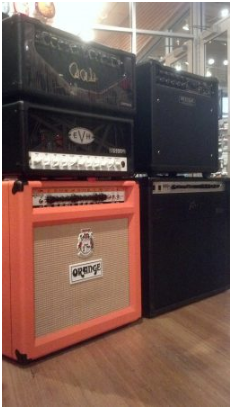Products Category
- FM Transmitter
- 0-50w 50w-1000w 2kw-10kw 10kw+
- TV Transmitter
- 0-50w 50-1kw 2kw-10kw
- FM Antenna
- TV Antenna
- Antenna Accessory
- Cable Connector Power Splitter Dummy Load
- RF Transistor
- Power Supply
- Audio Equipments
- DTV Front End Equipment
- Link System
- STL system Microwave Link system
- FM Radio
- Power Meter
- Other Products
- Special for Coronavirus
Products Tags
Fmuser Sites
- es.fmuser.net
- it.fmuser.net
- fr.fmuser.net
- de.fmuser.net
- af.fmuser.net ->Afrikaans
- sq.fmuser.net ->Albanian
- ar.fmuser.net ->Arabic
- hy.fmuser.net ->Armenian
- az.fmuser.net ->Azerbaijani
- eu.fmuser.net ->Basque
- be.fmuser.net ->Belarusian
- bg.fmuser.net ->Bulgarian
- ca.fmuser.net ->Catalan
- zh-CN.fmuser.net ->Chinese (Simplified)
- zh-TW.fmuser.net ->Chinese (Traditional)
- hr.fmuser.net ->Croatian
- cs.fmuser.net ->Czech
- da.fmuser.net ->Danish
- nl.fmuser.net ->Dutch
- et.fmuser.net ->Estonian
- tl.fmuser.net ->Filipino
- fi.fmuser.net ->Finnish
- fr.fmuser.net ->French
- gl.fmuser.net ->Galician
- ka.fmuser.net ->Georgian
- de.fmuser.net ->German
- el.fmuser.net ->Greek
- ht.fmuser.net ->Haitian Creole
- iw.fmuser.net ->Hebrew
- hi.fmuser.net ->Hindi
- hu.fmuser.net ->Hungarian
- is.fmuser.net ->Icelandic
- id.fmuser.net ->Indonesian
- ga.fmuser.net ->Irish
- it.fmuser.net ->Italian
- ja.fmuser.net ->Japanese
- ko.fmuser.net ->Korean
- lv.fmuser.net ->Latvian
- lt.fmuser.net ->Lithuanian
- mk.fmuser.net ->Macedonian
- ms.fmuser.net ->Malay
- mt.fmuser.net ->Maltese
- no.fmuser.net ->Norwegian
- fa.fmuser.net ->Persian
- pl.fmuser.net ->Polish
- pt.fmuser.net ->Portuguese
- ro.fmuser.net ->Romanian
- ru.fmuser.net ->Russian
- sr.fmuser.net ->Serbian
- sk.fmuser.net ->Slovak
- sl.fmuser.net ->Slovenian
- es.fmuser.net ->Spanish
- sw.fmuser.net ->Swahili
- sv.fmuser.net ->Swedish
- th.fmuser.net ->Thai
- tr.fmuser.net ->Turkish
- uk.fmuser.net ->Ukrainian
- ur.fmuser.net ->Urdu
- vi.fmuser.net ->Vietnamese
- cy.fmuser.net ->Welsh
- yi.fmuser.net ->Yiddish
How To Get the Most From Your Channel-switching Amp — Part 2
Date:2020/1/3 17:17:11 Hits:

In Part 1 of this series, we looked at how to decide which channel-switching amp would best suit your needs. Part 2 is about making the best use of all of the options that modern, channel-switching amps offer.
Two Channels, No Waiting
Another way to use two channels is to set them both closer together sonically. Set channel one, which is usually the cleaner channel, higher in its gain spectrum and channel two, usually the dirty channel, on the lower end of its gain range. This way, you can turn down your guitar’s volume knob for cleaner sounds on channel one and still have dynamic expression. You can also get more slightly dirty options from channel two with your guitar’s volume knob. I’ve found this technique is very effective with my Mesa/Boogie Recto-Verb 25 Combo. Using the Pushed setting on channel one and the Vintage setting on channel two, I can get similar gain structures on both channels. Setting the EQ different on each channel opens up more options and adding an overdrive or boost pedal gives a lot of sonic and dynamic flexibility.
Channel Surfing
Effects Loops
Here’s a practical application: boost, compression, overdrive, and wah effects will drive the input stage of the amp and shape the gain accordingly while modulation, delay, and reverb in the effects loop will create a wash that can be blended into the overall sound. There are no rules of course, but typically a reverberated distortion sounds better than a distorted reverb, in a manner of speaking.
Some amps also have effects loops that can be assigned to specific channels or switched on and off on the fly. This gives you the option to have delay and boost pedals specifically set to engage on your lead channel only, or to have a crisp compression and flanger setting for your clean channel only, for example.
Leave a message
Message List
Comments Loading...





